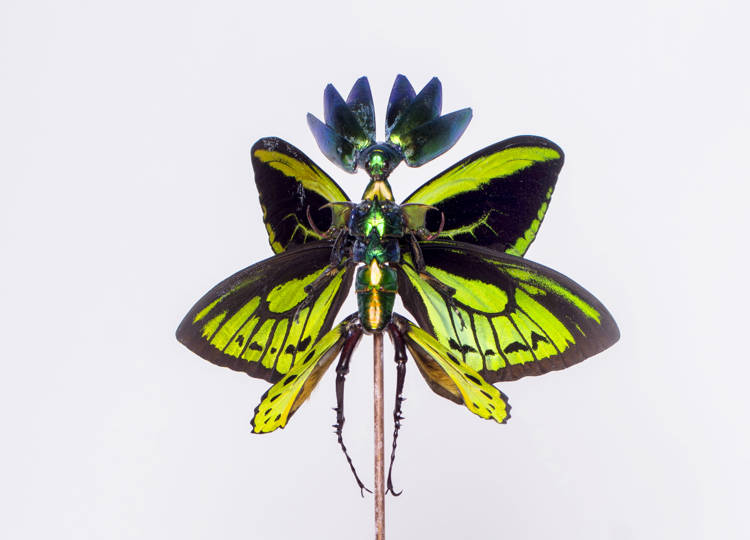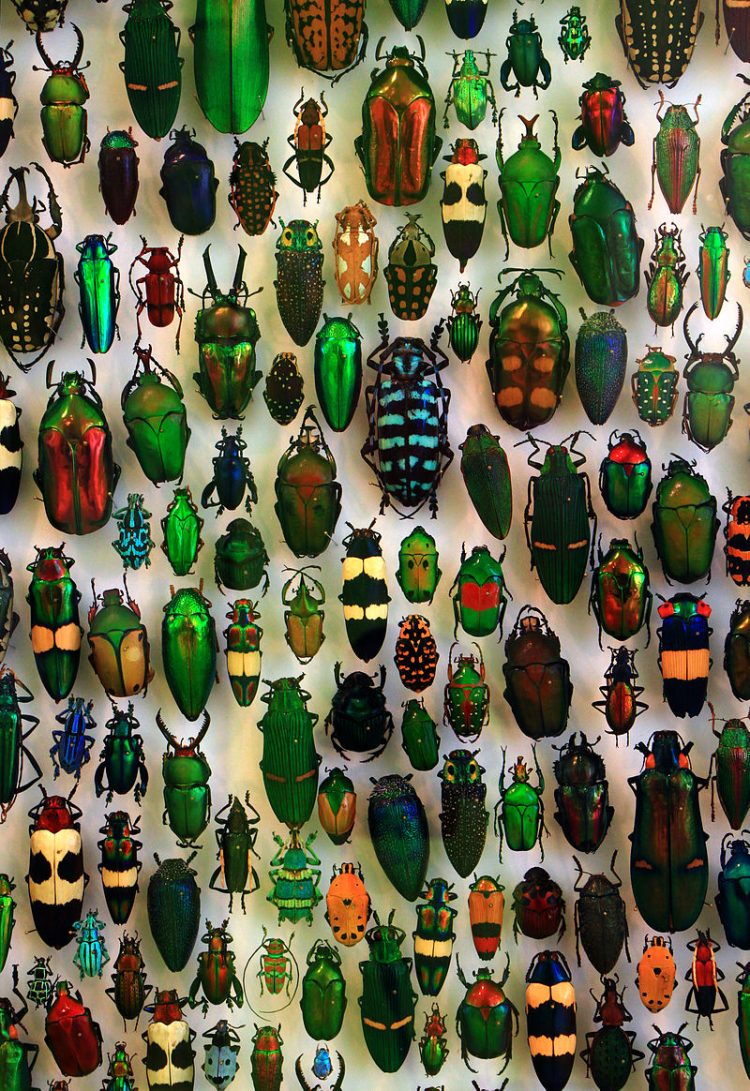Damien Hirst is known as one of the most controversial artists of our time, and his latest work only adds to his reputation. Capaneus, part of the ‘entomology‘ series that hirst has been working on since 2009, features hundreds of insect species placed in intricate geometric shapes and fixed in place with household gloss paint.
Considering many people find insects, spiders and scorpions disgusting or even frightening, it’s fair to say Capaneus is not an artwork for the faint of heart. However, considering Hirts’s past “masterpieces” include a diamond-encrusted baby skull, and an installation where maggots hatched, developed into flies and feasted on a severed cow’s head in a glass box, I’d have to say his latest creation is one of the least controversial. According to the English artist’s website, “this work’s title derives from Dante’s ‘Inferno’ which recounts how the warrior king Capaneus is struck down with lightening and thunder bolts by the angered deities whom he has held in contempt. Dante’s account originates from the Latin epic poem ‘Thebaid’ in which it is described how, body and helmet aflame, Capaneus falls from the walls to the ground below where he lies outstretched, ‘his lifeless body as immense as that of a giant.” Like the rest of the artworks in the “entomology” series, Capaneus alludes to Hirst’s long time interest in the nineteenth century fascination with natural history and the irony involved in having to kill something in order to look at it.

Read More »











